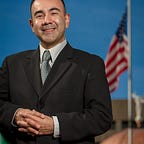Resetting the Local Economy After COVID-19: What’s Next?
On July 9th, the Institute for Local Government, CSAC Finance Corporation, and Kosmont Companies hosted a webinar highlighting the economic hurdles that local governments and private investors are facing in the wake of COVID-19. While the webinar focused in on California’s changing economic landscape, the panelists emphasized that the potential ramifications should be very similar across the United States.
As the country begins to reopen and recover economically from COVID-19, city and county governments are facing huge setbacks:
- cities are bracing for nearly $7 billion general revenue deficits over the next two fiscal years
- cities and counties most severely impacted are those with high dependencies on sales tax and hotel occupancy taxes (TOT)
- US counties could face budgetary impacts as much as $144 bullion in lost revenue
Adaptability is going to be the name of the game for the foreseeable future, and as the nationwide financial blow has shown, nothing is the same as it was pre-pandemic.
Larry Kosmont and Ken Hira (the CEO and President of Kosmont Companies, respectively) shared the presentation time, and thoroughly outlined the shifting economy as it stands today; while COVID-19 remains at the forefront of national attention (especially as numbers have again begun to rise exponentially in many states), most companies and local governments are focused on making consumers feel safe and protected in their daily lives. For retail, hospitality, office, and restaurant industries, this is mainly focused on short-term customer retention- think marketing based on cleanliness and safety, rather than highlighting the individual company’s amenities.
Hira highlighted the clear relationship between the public and private sectors in terms of fiscal health; as retail and tourism have been hit hard by the pandemic, so have the incomes of the city and county governments. Because tourism and retail are projected to be the slowest industries to recover, city and county governments must use their resources wisely over the coming months and years to bounce back more quickly.
In the long-term, both Kosmont and Hira anticipate a sort of “land-use revolution” that will stimulate local economies, if done right. Gone are the days of massive, multi-store malls, and with the multiple big-anchor retail companies announcing bankruptcy due to COVID-19, it’s looking less and less likely that retail as we know it will remain a strong industry. E-commerce has gained huge traction during the lockdown of many communities, and the convenience of ordering online has never been more attractive. The future of mall spaces, according to Hira, includes more outdoor amenities, smaller shops, and integration of residential and office space. The key will be a city-square feel for the space, rather than a huge grouping of anchor retail stores.
Industrial space, too, will be a staple in this “land-use revolution.” As e-commerce and online grocery becomes more desirable, there will be new need for fulfillment, manufacturing, and shipping facilities that exist closer to residential areas. Now is the time to capitalize on those industrial needs, and for cities to use flexible zoning as leverage in bringing bigger industrial projects to their areas. Because city governments that rely heavily on sales tax and TOT for a large proportion of their revenue are facing huge budget deficits over the coming quarters, being able to attract industrial projects has never been more important.
Things are changing very rapidly for public and private economics. The resilience of the economy will be contingent on the public and private sector’s ability to adapt to the new needs of the people: e-commerce for both retail purchases and grocery, experiential retail shops when they do shop in-person, and safe and trustworthy hotel stays.
Originally published at http://cima.law.blog on July 10, 2020.
